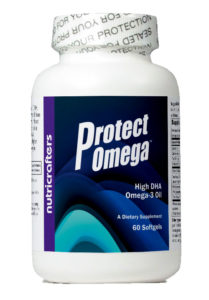Like other parts of your anatomy, the size of your cholesterol particles is partly hereditary. Centenarians—those who have reached the age of 100 years or older—are ten times more likely to have large cholesterol particles than controls, and so are their children. (Barzilai N, Atzmon G, et al. JAMA. 2003 Oct 15;290(15):2030-40.)
Centenarians are three times more likely to have the variant of the gene cholesteryl ester transfer protein or CETP that produces larger lipoproteins, and ten times more likely to have large cholesterol particles than controls.
What about those of us who haven’t been blessed with the luck of the genetic draw? Turns out that lipoprotein size can also be altered by exercise (which increases LDL and HDL size plus the number of HDL) and diet (trans fats, not surprisingly, promote “bad” small LDL, while DHA, an omega-3 essential fatty acid found in fish, increases not only the size of LDL but the number of HDL).
Among numerous studies indicating this to be the case, here are a few recent examples:
Exercise:
Researchers evaluated 100 sedentary, healthy 50- to 75-year-olds following a standardized diet before and after 24 weeks of aerobic exercise training. Total cholesterol, triglycerides, and LDL cholesterol decreased significantly and HDL3-C and HDL2-C (larger HDL) increased significantly. (Halverstadt A, Phares DA, et al. Metabolism. 2007 Apr;56(4):444-50.)
In other exercise research, 240 sedentary, overweight subjects were randomized to either a control group (no exercise) or one of three exercise groups: high amount and high intensity, low amount and high intensity, low amount and moderate intensity.
Non-exercising controls saw their LDL particles increase in number and shrink in size—the worst outcome. Even modest exercise prevented this. Moderate-intensity but not vigorous-intensity exercise resulted in a sustained reduction in VLDL cholesterol (the smallest most dangerous form of LDL) over 15 days – that’s essentially just 2 weeks! The high-amount / high intensity group (30 minutes per day of vigorous exercise like jogging) had significant improvements in HDL amount and particle size, and large HDL levels were sustained for 15 days after exercise stopped – so, if you miss a few days at the gym, no worries. (Slentz CA, Houmard JA, et al. J Appl Physiol. 2007 Aug;103(2):417-8.)
DHA:
Researchers enrolled 34 volunteers, aged 39-66 years, half of whom consumed a half-teaspoon of DHA daily, while the other half received a daily half-teaspoon of olive oil for 90 days, in addition to regular meals. DHA reduced the number of small LDL particles by 22% and increased the number of large LDL particles by 127%. No changes were noted with olive oil. (Kelley DS, Siegel D, et al. Am J Clin Nutr. 2007 Aug;86(2):324-33.)
Avoid trans fats:
Trans fats, which are formed during the process of hydrogenating vegetable oil (and thus also appear on labels as “hydrogenated” fat), deliver a double negative whammy to your cholesterol profile. Not only do they increase your levels of small, dense LDL, they also decrease your levels of all sizes of HDL. (Denke MA. Curr Atheroscler Rep. 2006 Nov;8(6):466-71; Mauger JF, Lichtenstein AH, et al. Am J Clin Nutr. 2003 Sep;78(3):370-5.)
You’ve seen those “Get Bigger” emails? Well, if you truly want to give your loved one what she deserves (i.e., you, still healthy at 100), increase the size of your cholesterol!
Exercise, and a trans-free, DHA-rich diet is a proven formula, endorsed by doctors. (Although given both the mercury levels in many fish, and the sustainability problems of over-fishing, and the numerous health and environmental issues attending fish farming, taking a daily high quality DHA supplement may be preferable to consuming fish more than once or twice a week.)
Following this healthy lifestyle is virtually guaranteed to increase your cholesterol size permanently. Safe, Fast, Highly effective – All Natural! And It Really Works!
References
- Barzilai N, Atzmon G, Schechter C, Schaefer EJ, Cupples AL, Lipton R, Cheng S, Shuldiner AR. Unique lipoprotein phenotype and genotype associated with exceptional longevity. JAMA. 2003 Oct 15;290(15):2030-40.
- Halverstadt A, Phares DA, Wilund KR, Goldberg AP, Hagberg JM. Endurance exercise training raises high-density lipoprotein cholesterol and lowers small low-density lipoprotein and very low-density lipoprotein independent of body fat phenotypes in older men and women. Metabolism. 2007 Apr;56(4):444-50.
- Slentz CA, Houmard JA, Johnson JL, Bateman LA, Tanner CJ, McCartney JS, Duscha BD, Kraus WE. Inactivity, exercise training and detraining, and plasma lipoproteins. STRRIDE: a randomized, controlled study of exercise intensity and amount. J Appl Physiol. 2007 Aug;103(2):417-8.
- Kelley DS, Siegel D, Vemuri M, Mackey BE. Docosahexaenoic acid supplementation improves fasting and postprandial lipid profiles in hypertriglyceridemic men. Am J Clin Nutr. 2007 Aug;86(2):324-33.
- Denke MA. Dietary fats, fatty acids, and their effects on lipoproteins.Curr Atheroscler Rep. 2006 Nov;8(6):466-71.
- Mauger JF, Lichtenstein AH, Ausman LM, Jalbert SM, Jauhiainen M, Ehnholm C, Lamarche B. Effect of different forms of dietary hydrogenated fats on LDL particle size. Am J Clin Nutr. 2003 Sep;78(3):370-5.
